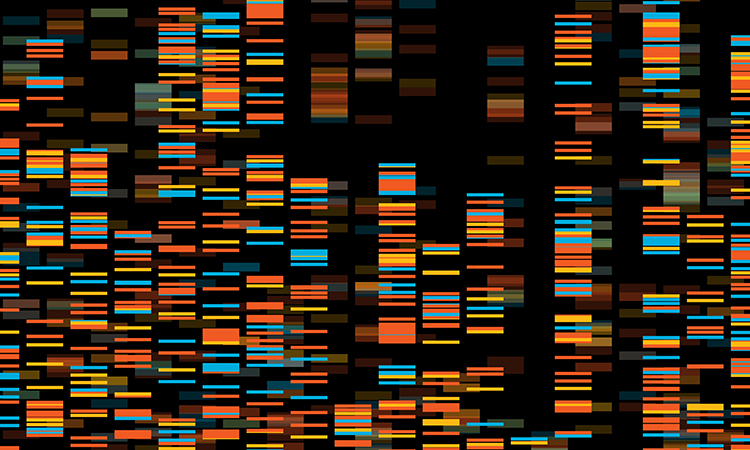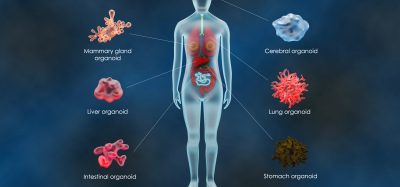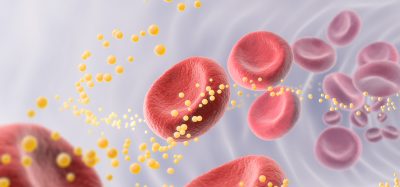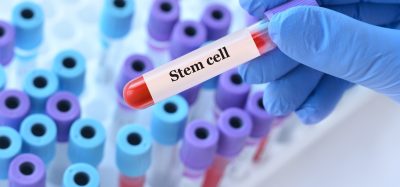The power of big data to advance genomics into clinical care
Posted: 26 July 2024 | Drug Target Review, Hylton Kalvaria (Helix) | No comments yet
The integration of genomics into patient care will lead to more precise, personalised treatments. In this Q&A, Hylton Kalvaria, Chief Commercial Officer of Helix, explains how the Helix Research Network is creating a large-scale clinicogenomics dataset to advance research into molecular and genetic determinants of disease risk and drug response.


What are the key features of Helix’s new clinico-genomic datasets, and how do they support precision medicine drug discovery and development?
Helix has a unique setup compared to some of the other places where you could get these kinds of datasets. We have a dual aim: to use the power of sequencing for more personalised patient care; and to be able to leverage those datasets to progress various programmes within drug discovery.
However, we see applications across the entire drug development life cycle, from target discovery and biomarker development to clinical development programmes and finding patients for clinical trials based upon both genotypic and phenotypic criteria. Ultimately, when these drugs hit the market, we can answer difficult questions about how these precision medicines work in different kinds of patient populations with better safety and efficacy profiles. We can discover what the genetics are behind patients that respond, those who experience safety signals and those who do not experience either of these outcomes. That is how we see these datasets working for life sciences companies.
How do Helix’s partnerships with health systems contribute to the creation of population-scale cohorts, and what therapeutic areas do these cohorts cover?
When it comes to precision medicine outside of oncology, there is a bit of a chicken-and-egg problem. What we have seen in oncology over the last 10 to 15 years, and continue to see now, is that these datasets lag behind the availability of these drugs on the market.
Biomarkers are redefining how precision therapies are discovered, validated and delivered.
This exclusive expert-led report reveals how leading teams are using biomarker science to drive faster insights, cleaner data and more targeted treatments – from discovery to diagnostics.
Inside the report:
- How leading organisations are reshaping strategy with biomarker-led approaches
- Better tools for real-time decision-making – turning complex data into faster insights
- Global standardisation and assay sensitivity – what it takes to scale across networks
Discover how biomarker science is addressing the biggest hurdles in drug discovery, translational research and precision medicine – access your free copy today
The typical pattern is that an interesting biomarker that drives a particular condition is found, a diagnostic is developed for it, and a drug makes its way through the drug development pipeline and eventually hits the market some years later. This means the availability of datasets resulting from patients taking those medications and the diagnostics being deployed in the real world have a significant lag.
What Helix is doing is trying to flip that paradigm”
There are not a lot of good reasons why patients need to get these genetic tests proactively today unless they develop a condition that requires them. As a result, very few patients end up getting these tests. What Helix is doing is trying to flip that paradigm and use these large-scale population health screening programmes to generate datasets from a very large number of patients.
Health systems are signing up with Helix to sequence a very large percentage of their patient population, upwards of 100,000. This helps produce a dataset that does lots of different things. For example, they help to identify patients for whom early intervention is possible because we provide genetic information that otherwise would not have been available. It also produces a dataset that is incredibly interesting for drug discovery.
What Helix is doing is different because we are producing these large patient populations in a much more organic way by directly integrating through the health systems, as opposed to what you would normally see in a large biobanking initiative, which is typically where people would go for these kinds of datasets.
In what ways can researchers utilise Helix’s clinico-genomic cohorts to understand genetic factors associated with disease progression and clinical outcomes?
When we think of researchers, we think of at least three different categories. One would be our health systems. Many of our health systems have internal research programmes to understand their patient populations better, to treat them in a more efficient way to help them to live longer, healthier lives.
The second category would be our internal team of researchers. These are trained geneticists who are looking for signals in the dataset that have two different aims. The first is to support our population health programmes and the second is to execute on interesting research questions that come from our life sciences partners.
The second category, which is indicative of what Recursion is doing, is Helix providing them direct access to a set of de-identified records, which they can run their own analytics against. Recursion is famous for having signed this partnership with NVIDIA. Their supercomputer, BioHive-2, enables it to screen lots of different combinations within a dataset to discover the things that are going to be useful from a drug discovery perspective.
What are the specific benefits of Helix’s Exome+® sequencing data, and how does it enhance the longitudinal clinical data of over 125,000 patients?
One of the things that we are most proud of is the clinical depth of our data and sometimes that is not talked about extensively when we discuss genetics. Everybody gets very excited about the fact that you have whole exome sequencing data. However, the fact that you can pair it with longitudinal clinical data becomes incredibly important. This enables you to follow different cohorts of patients over time. This means you can match the genetics they were born with, with the disease/s they develop and the interventions that are made to see who responds and who does not, and who experiences safety signals.
Attaching the rich clinical data that comes out of these health systems to patient records is a game changer. For example, it would include lab results for these patients, which are often very difficult to access.
The other big difference is our study is fully consented. When a patient is sequenced and becomes part of the Helix Research Network (HRN), they are given the option to allow their data to contribute to this larger study that is used for research purposes. Part of that consent is asking them whether they would like to be recontacted for various kinds of studies. Those studies could be a clinical trial that they might be eligible for or an observational study. They could also be vitally useful in other scenarios where the life sciences company or the researcher wants to go back to the patient to ask them questions, perhaps to collect a different kind of sample from them to run a very focused study. That ability to go back to the patient is unique for the HRN.
How does Helix’s Cardiometabolic cohort illustrate the integration of clinical and genomic data, and what key metrics are included in this cohort?
One example of melding together the genetic components and the clinical components is Glucagon-like peptide-1 (GLP-1) agonists for type 2 diabetes and weight loss. We went into the dataset and looked at the endpoints and measurements that were most critical for these drugs when they were studied in clinical trials. Once these drugs hit the market, these are the same kinds of questions that life sciences companies are going to ask of them. Weight, body mass index (BMI), glycated haemoglobin (HbA1c), blood pressure, heart rate, low-density lipoprotein (LDL) and high-density lipoprotein (HDL) cholesterol and triglycerides are the metrics that are most important from the clinical trials.
If you looked at autoimmune conditions, you would be looking for a completely different set of measurements and outcomes. When people are seen in the clinic and have labs ordered we will have all that information specific to their condition.
All the metrics mentioned above for the cardiometabolic cohort are what we have collected on a longitudinal basis for all those patients.
What other benefits can HRN provide?
Helix is a multi-centre network – we have centres in 10 different states. That is a big differentiator versus say UK biobank, which is a single-country dataset.
We expect to see a million patients entered into the HRN over the next two to three years”
These will be 10 different kinds of centres – a mix of academic and community medical centres and the network is growing organically over time. As we add new centres, we are going to see a larger number of patients in this dataset. We expect to see a million patients entered into the HRN over the next two to three years as each new centre adds an additional 100,000 patients. You can see how this grows organically and because each patient has given their consent it means we have a much broader population to analyse and potentially revisit.
About the author


Hylton Kalvaria, Chief Commercial Officer of Helix. Kalvaria has a wealth of executive experience and healthcare data expertise gleaned from more than a decade of holding positions of increasing responsibility within the life sciences industry. He was most recently President and Chief Commercial Officer at clinical natural language processing startup Mendel AI. Kalvaria also served in leadership roles at Verana Health, Flatiron Health, and Genentech.
Related topics
Clinical Trials, Disease Research, Drug Discovery Processes, Genomics, Molecular Targets, Personalised Medicine, Precision Medicine
Related organisations
Helix
Related people
Hylton Kalvaria (Helix)








